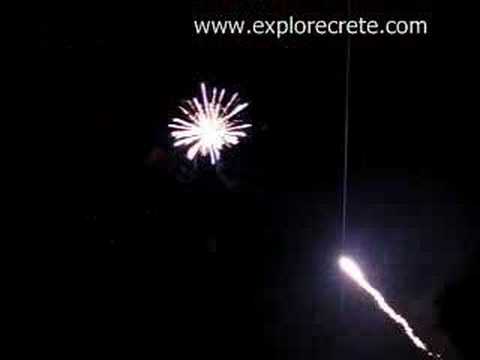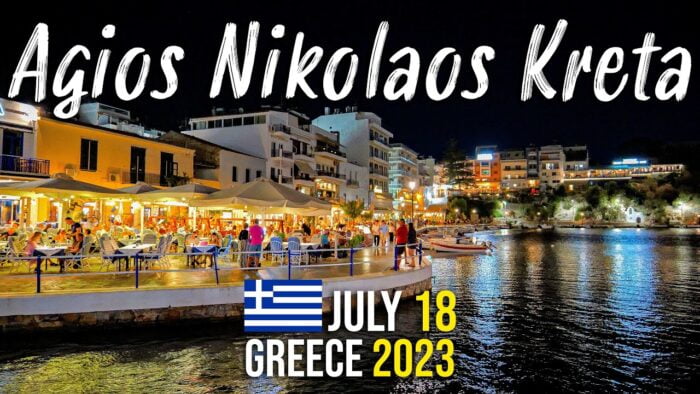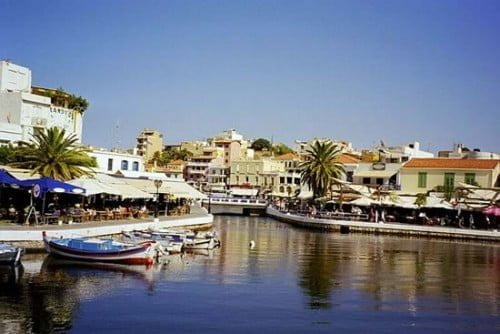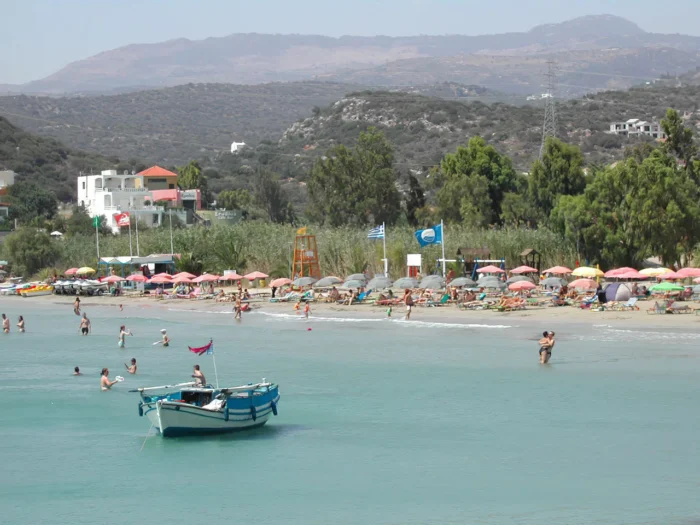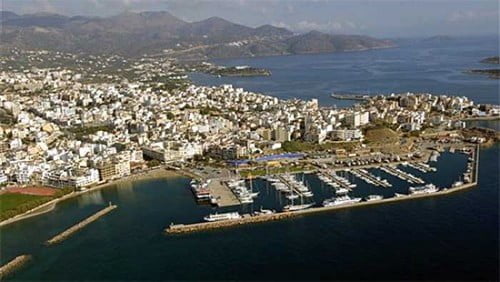Holidays in Ierapetra
Practical information for your holidays in Ierapetra
Ierapetra is a large modern town with no reason to envy the larger Cretan cities. In Ierapetra you’ll find everything you may need on holiday: banks, cashpoints, a post office in Kornarou St., pharmacies, medical centres and private practices, shops selling tourist goods and gifts.
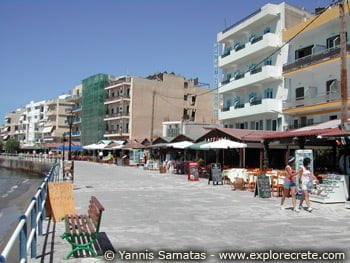
There are also internet cafés, car and motorcycle rental agencies, and many travel bureaux.
Hotels in Ierapetra
Hotels in Ierapetra will suit every taste. There are large, all-inclusive hotels on the beaches, mainly at the east end of town, and also many cheaper alternatives in both the old and the new part of Ierapetra.
As Ierapetra is a very lively town with a throbbing nightlife, be careful to choose a quiet hotel where you won’t be kept awake all night unless you want to.
You should also bear in mind that there is a lack of parking spaces, and you may need to leave your car quite a long way from the hotel if there’s no customer car park.
There is a campsite on the road to Koutsounari, for those in search of cheaper holidays closer to nature.
Restaurants in Ierapetra
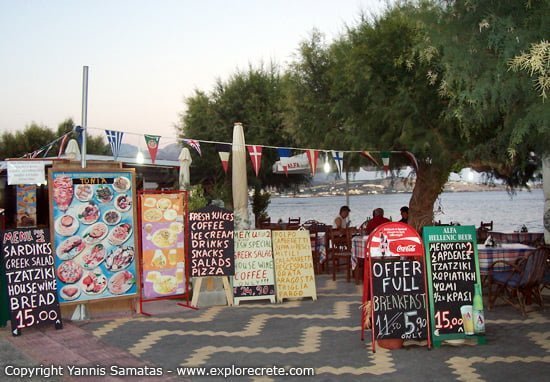
Ierapetra offers a wide variety of food and entertainment choices. Thera are many restaurants in Ierapetra, especially on the beach road, where you can enjoy romantic dinners by the sea.
Seafood is a favourite here, especially if you try the little tavernas in the west part of Ierapetra, near the Kales Fortress and the town harbour.
If you’d like something more traditional, try the tavernas in Eleftherias Square and Kanoupaki Square.
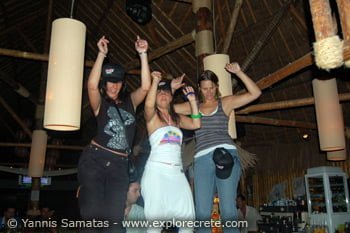
Cafés and Bars in Ierapetra
There are café-bars and clubs scattered throughout the town of Ierapetra.
Especially in the summer, the heart of town beats on the beach road and the area near the Archaeological Museum, where there are plenty of bars and nightclubs with live music.
Generally speaking, Ierapetra is famous for its nightlife, drawing visitors from many nearby areas.
What to do on holiday in Ierapetra
If you decide to spend your holidays in Ierapetra, one thing is certain: you won’t be bored. Apart from the many beaches in or near Ierapetra, your excursion and sightseeing choices are almost inexhaustible.
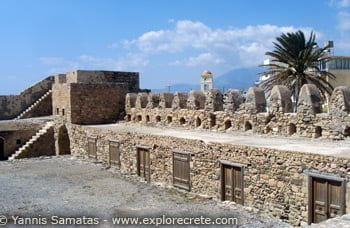
Visit the Kales Fortress in Ierapetra. The Venetians who came here in the 13th century wanted to set their mark on the territory by providing it with a fortress, which was probably built on the site of an older one, dominating the harbour mole.
“Kales”, as the fortress where the guard of Ierapetra lived was called, comes from the Turkish word “Koules”, meaning “tower”. The Kales Fortress is preserved today and is open to the public. Inside, you can see the surviving parts of the Venetian fortress and the Turkish modifications. Kales is also used for cultural events organised by Ierapetra Municipality as part of the “Kyrveia” Festival.
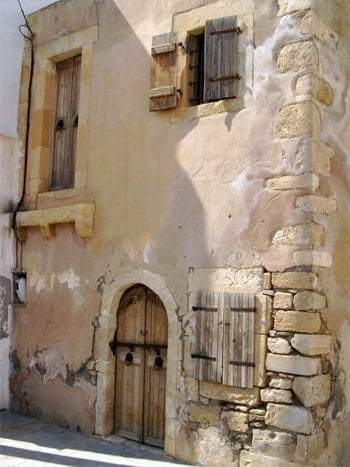
Napoleon’s House in Ierapetra. The locals will tell you proudly that the house in which Napoleon once stayed is preserved in Ierapetra.
In July 1798, Napoleon embarked on a campaign against the Mameluks of Egypt and his fleet moored off the coast of Ierapetra. The general himself stayed in the house of a local family. The family did not know who their guest was, but on departing he left a note saying, “If you wish to know who your foreign guest was, know that I am Napoleon Bonaparte”. History does not record whether Napoleon actually did stay in Ierapetra, but the story is so fascinating that it doesn’t really matter if it’s true or not.
Visit the Mosque of Ierapetra, in the Kato Mera neighbourhood, in the old town near the harbour. The Mosque was built in the late 19th century for the Turks who lived in the area. It was erected on the site of the church of St John. Over the doorway is a marble plaque engraved with an extract from the Qur’an.
Adjoining the mosque is the minaret, which was reconstructed in 1953. Opposite is an Ottoman fountain ornamenting the courtyard of the mosque, a beautiful building with arches and a dome.
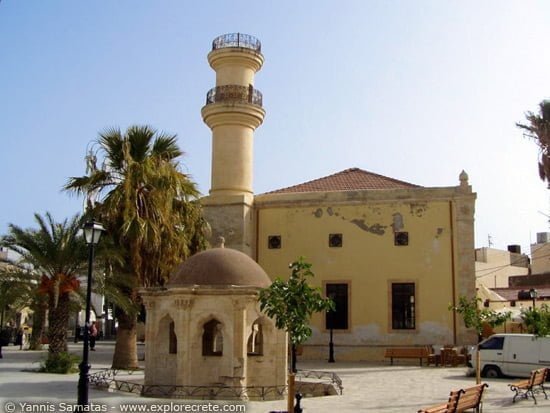
Ierapetra Archaeological Museum. The Archaeological Museum of Ierapetra is in Kanoupaki Square, near the Town Hall. It is housed in the Mehtepi, the old Ottoman School built in 1899. Although the town itself has not been systematically excavated, the few digs which have been carried out have brought to light important finds from different historical periods.
In the Ierapetra Museum you can see finds dating from the Minoan period to Greco-Roman times, including sarcophagi, elaborate vases, lamps, figurines, statues, and funerary and dedicatory inscriptions. It’s worth mentioning that in 1860 two marble sarcophagi, carved with scenes in relief, were found east of the town. One is decorated with subjects from the life of Achilles.
Ierapetra is the ideal base for daytrips to various villages in south Crete. Leave the coast for a while and explore the mountain villages in the area, west towards Myrtos or east towards Makry Gialos.
Selakano Forest, northwest of Ierapetra, is a beautiful pinewood, considered one of the most important ecosystems in the Mediterranean.
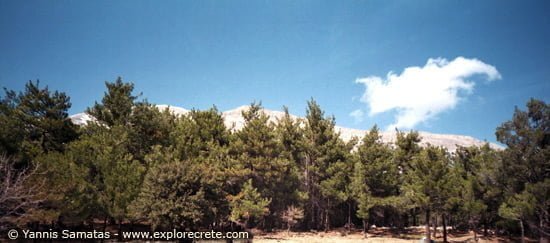
Visit the island of Chryssi (“Golden Isle”), also known as Gaidouronissi (“Donkey Island”). Eight nautical miles south of Ierapetra is a small, uninhabited island resembling an untouched paradise. Chryssi or Gaidouronissi is a great choice for a daytrip from Ierapetra.
There are daily boats from Ierapetra, leaving at 10:30 and 12 noon, which take tourists to the island and come to bring them back at 17:00 and 18:00. The trip costs €25 (2010 price).
The boats moor on the north side of Chryssi, at the spot known as “Vouyiou Mati” (“Ox Eye”), where the path inland begins. That is where the only building on the island is, offering refreshments to hungry and thirsty visitors.
Latest information: Boats are no longer allowed to dock on the island. They will take you close to the shore and you can swim to the island and spend time on the beach. Walking on the island is not allowed.
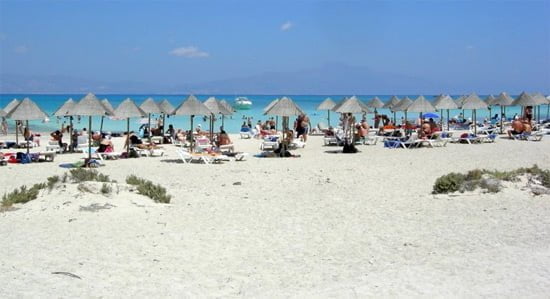
Chryssi is famous for its broken seashells, emerald sea and pink sand, with junipers growing all over the island. It’s really well worth spending a day on this excursion. Chryssi Island is a protected area, part of the European Natura 2000 network.
Bramiana Reservoir. Ierapetra and the surrounding area suffer from serious water shortages due to low rainfall. Water is piped down from the springs of Agios Ioannis in Psychro, quite some distance away.
Today the cultivatable area of Ierapetra (greenhouses and olive groves) covers 30 square kilometres, with a correspondingly high demand for water. In 1986 a major engineering work was undertaken: the construction of the artificial lake at Bramiana, 5 km northwest of Ierapetra on the road to Kalamafka, with a capacity of 15 million cubic metres. It is a habitat for birds and you can visit it.
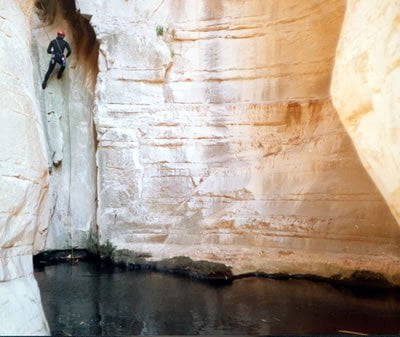
From Ierapetra, drive north to Monastiraki and continue along the dirt track to the Thrypti Plateau. Here begins the Ha Gorge. Its name is derived from the verb “hasko”, meaning to gape like a chasm.
The Ha Gorge does indeed resemble a deep cleft in the craggy rocks of the mountain. It’s quite a difficult gorge to cross, recommended only for experienced hikers. But even if you haven’t got the necessary experience to hike down the Ha Gorge, you can continue the mountain trail through the villages of Orino and Stavrochori, as far as the coast road to Makry Gialos.
If you’re looking for souvenirs for yourself or your friends in Ierapetra, one idea is to buy a Cretan knife. Ierapetra has long been famous for the high quality of its knives, the Yerapetritika knives with their distinctive sickle-shaped blade. “Yerapetritika” means “of Ierapetra”, as Ierapetra is often pronounced Yerapetra in the local dialect.
© explorecrete.com All Rights Reserved. Reproduction or copying without permission is prohibited.

